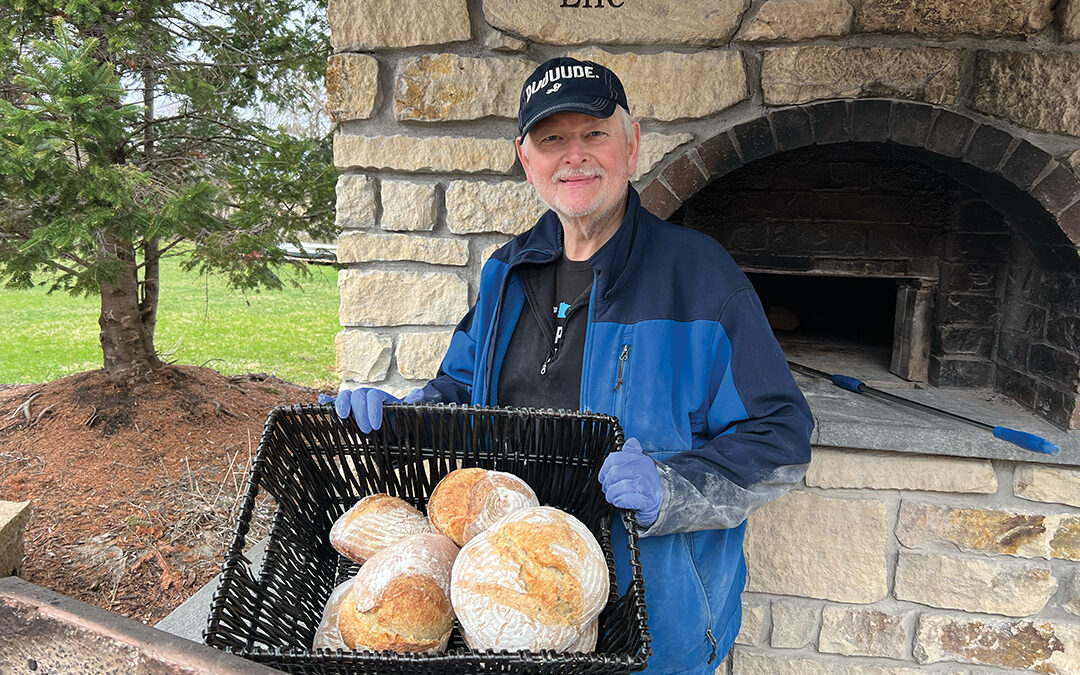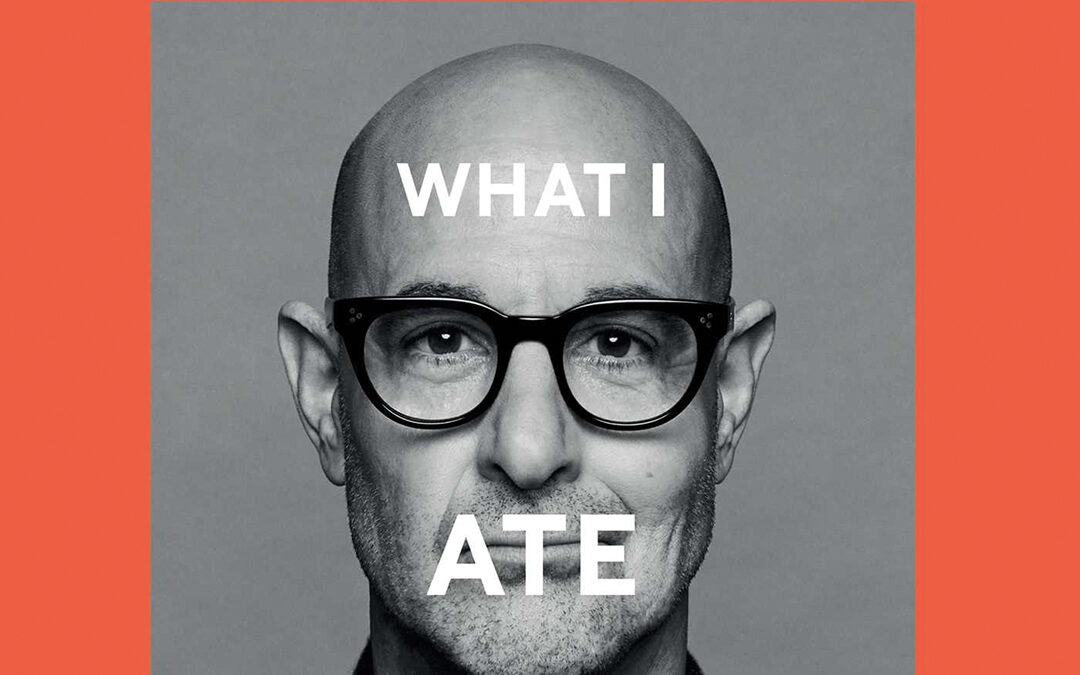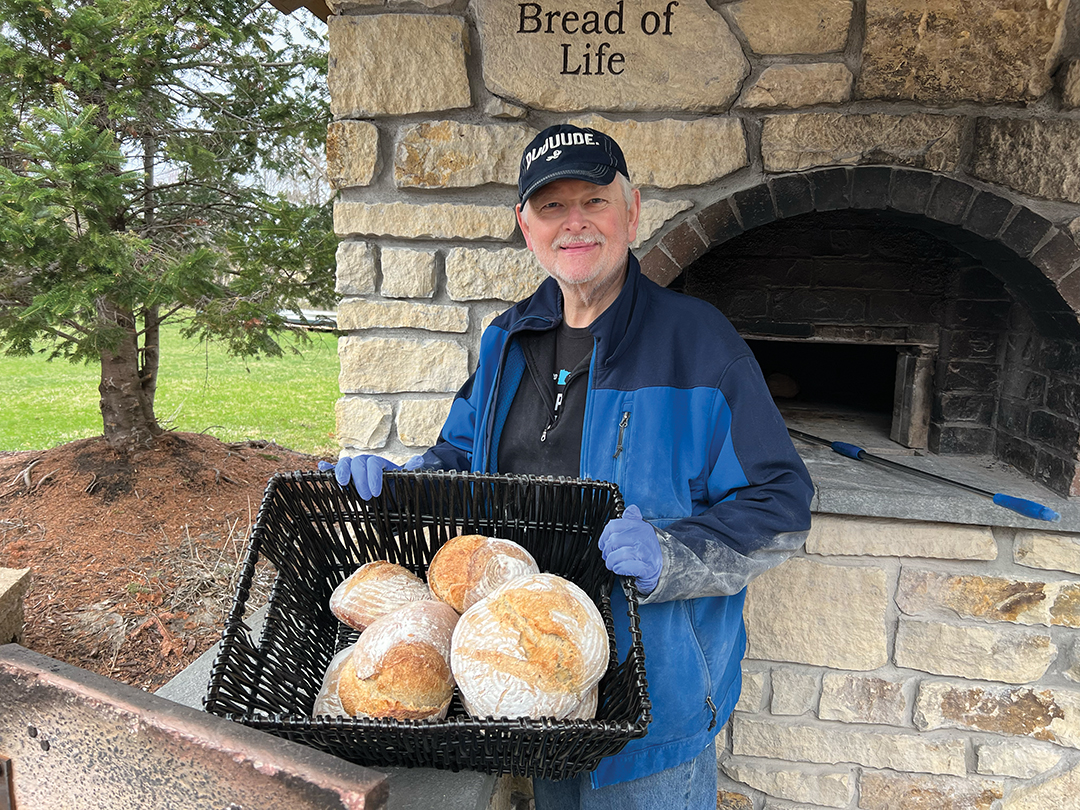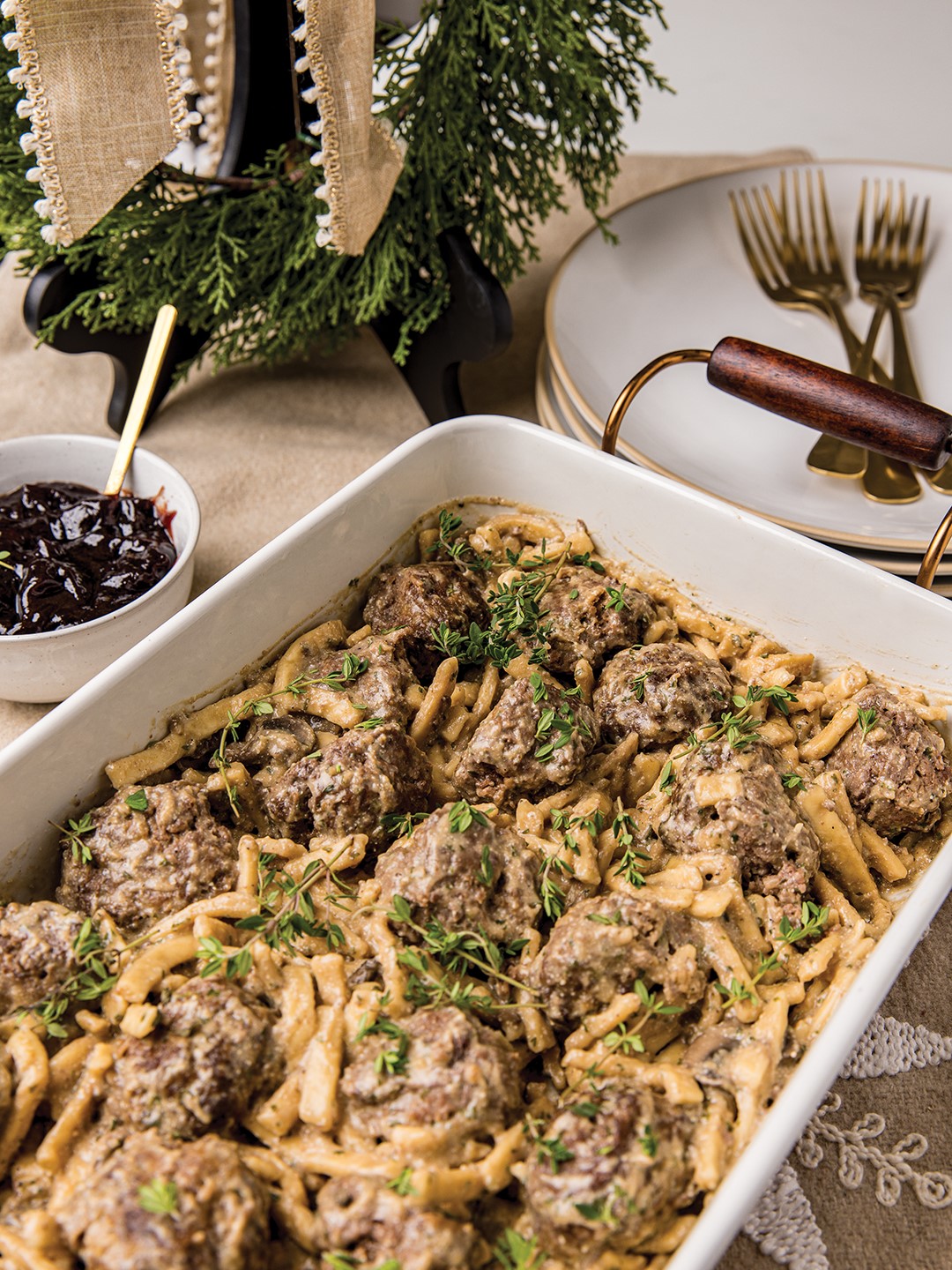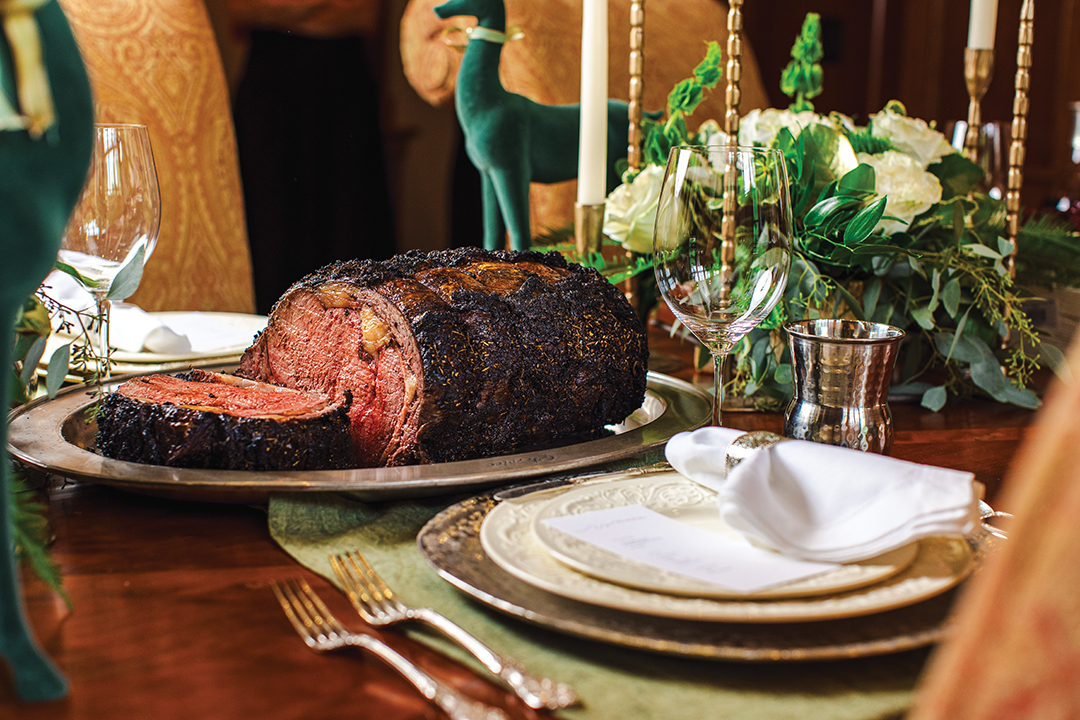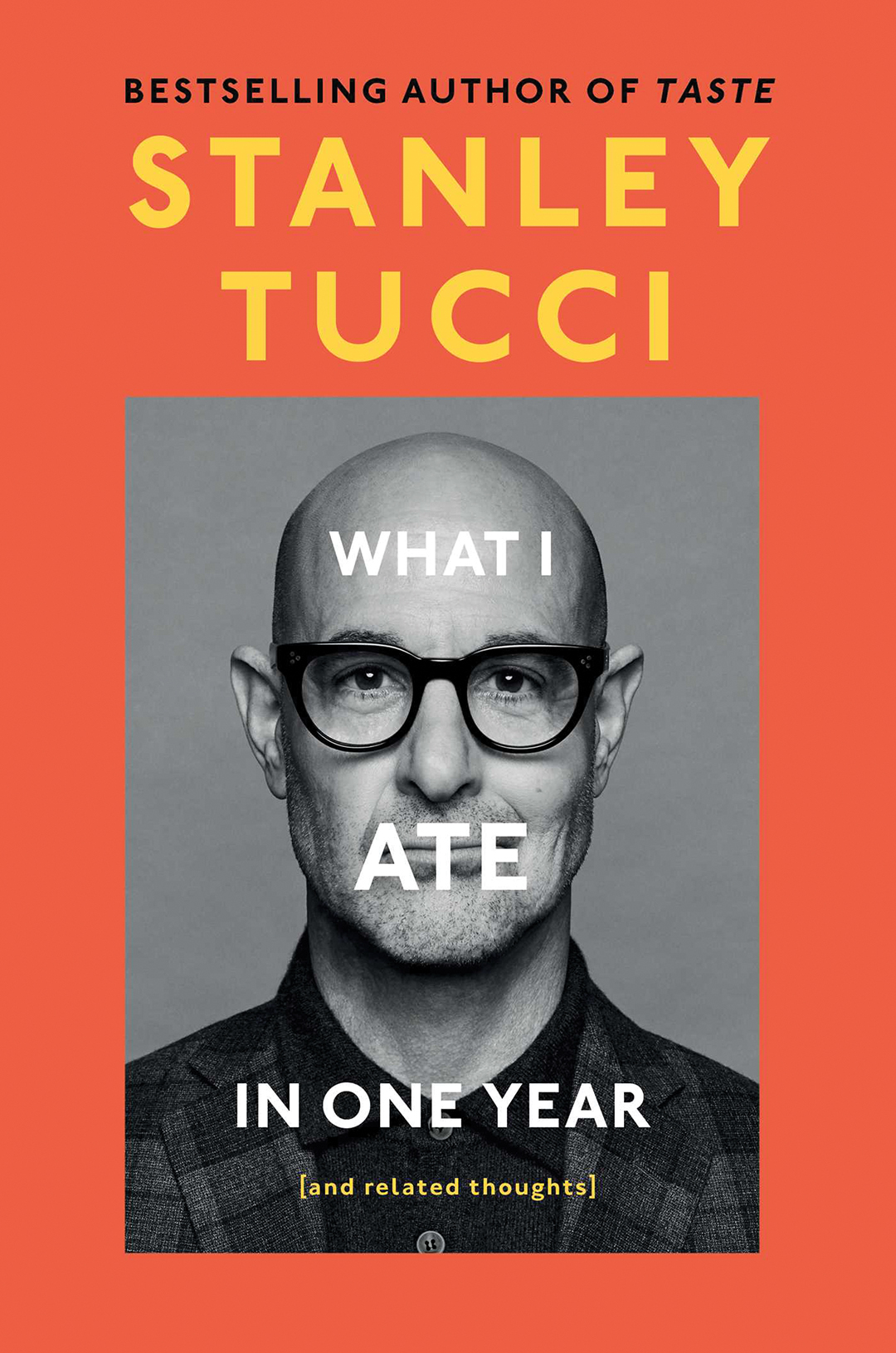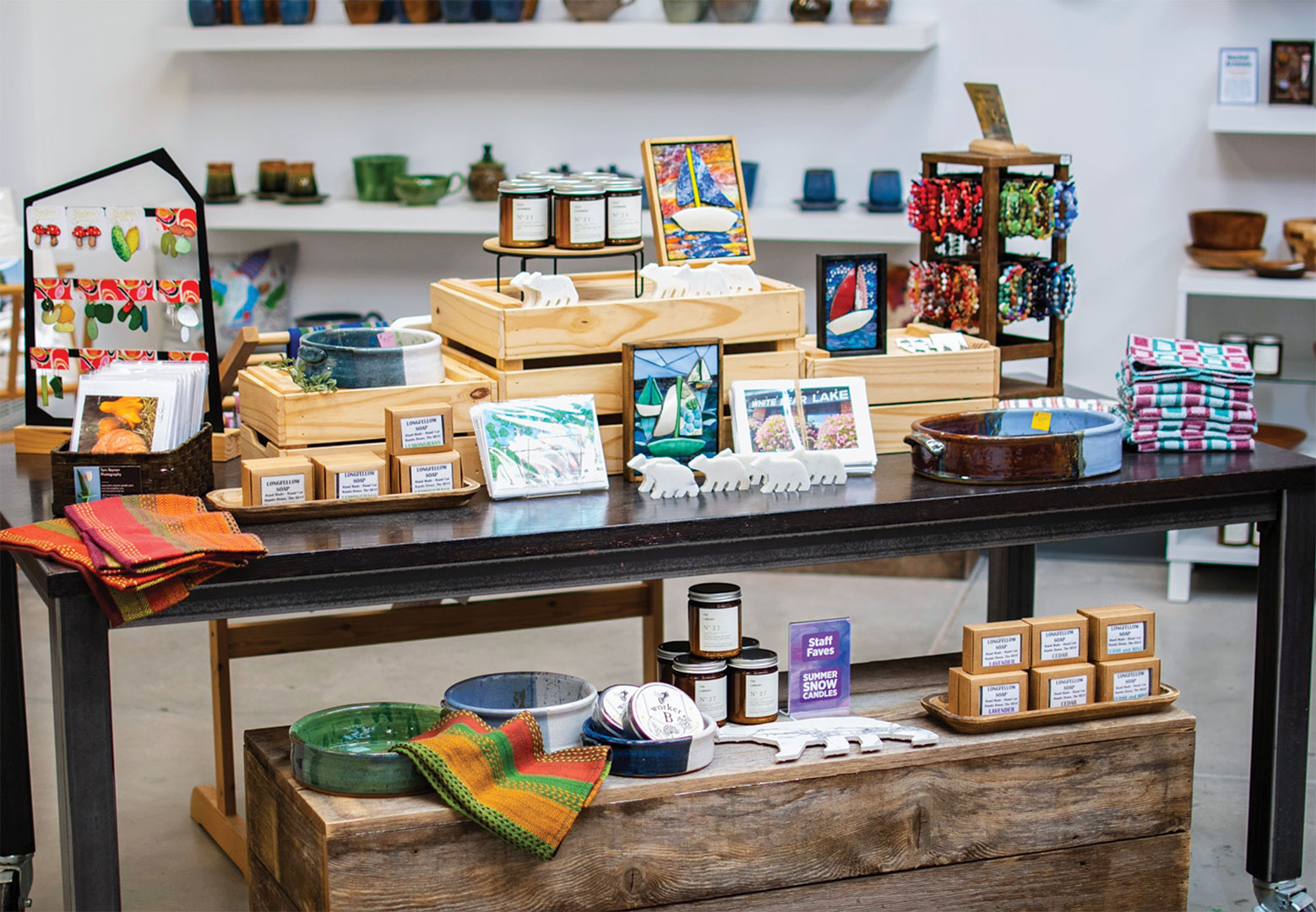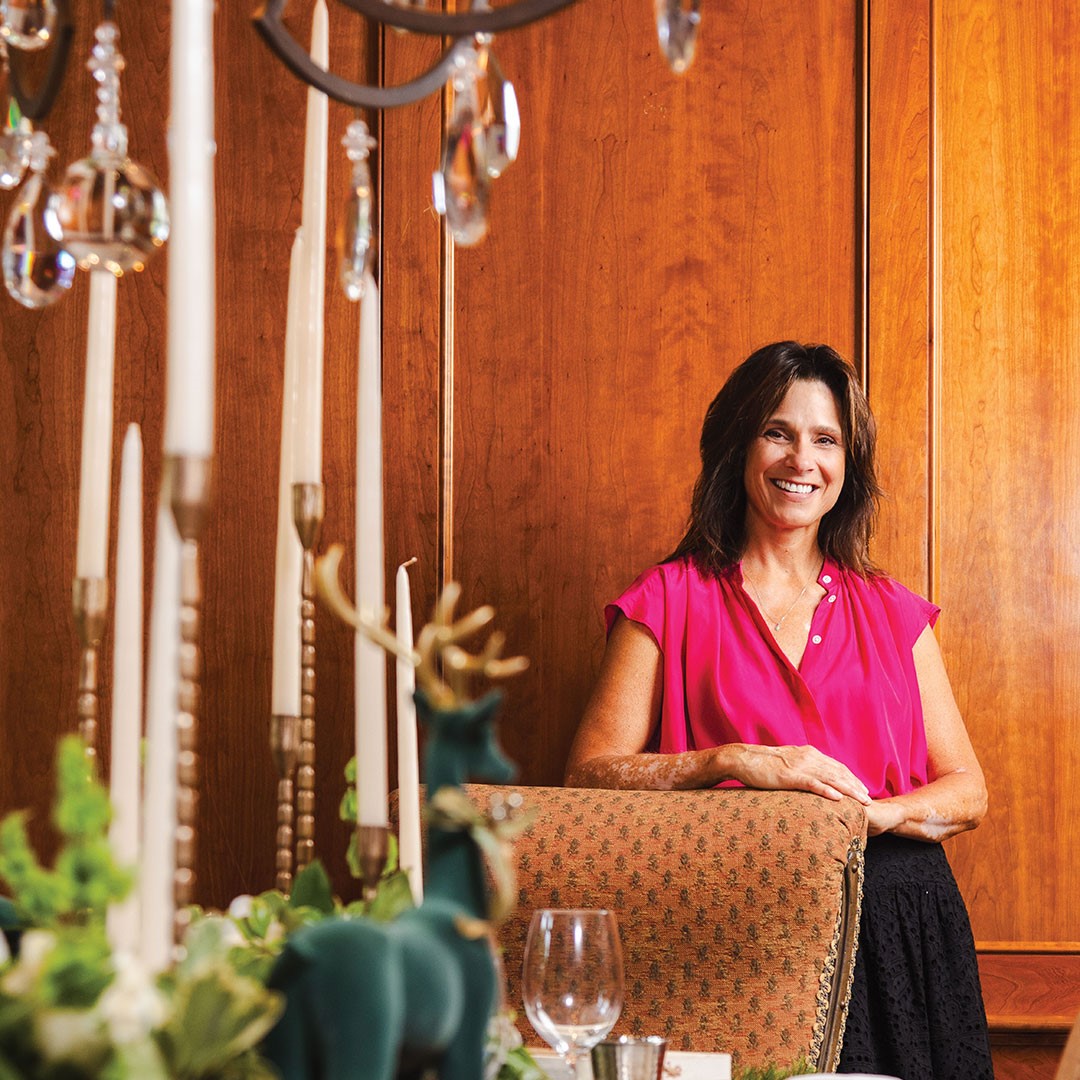
Beekeeper Andy Sorenson and his neighbor Mary Wingfield. Photos: Chris Emeott
Neighbors share their passion for beekeeping just in time for National Honey Month.
Andy Sorenson didn’t know much about bees when he decided to start beekeeping in his backyard. Ten years in, he’s still learning.
“The bee world is as deep as you want to go, and it’s filled with as many characters as you can imagine,” Sorenson says.
While many of us have a straightforward approach to honey, picking up a bear-shaped jar at the local grocer or farmers market, a growing group of passionate beekeepers is cropping up across the county, cities and suburbs. On urban roofs and in modest backyards, people are finding purpose (and delicious homegrown honey) through supporting the local bee population.
Paula Johnson, outreach coordinator for the Minnesota Hobby Beekeepers Association, said her organization has a membership of more than 800. “That’s probably only a fraction of the beekeepers in the state,” she says.
In the White Bear Lake area, Sorenson and his neighbor Mary Wingfield are two of many.
On any odd day, you can find Sorenson out in his backyard sitting beside his hive, watching the bees come and go. He says it’s one of his favorite things to do, especially observing the varying shades of their filled pollen pockets as they sneak back in. He says, “One day, they might be orange; the next day, bright yellow.”
Sorenson’s journey into backyard beekeeping began differently than most. When his brother was injured and unable to continue caring for his lone hive, Sorenson stepped up “to honor his hobby.” Now a figure in White Bear Lake’s beekeeping community, Sorenson has no regrets.
“It’s one of the dumb things I do in life, but I really enjoy it,” he says.
Wingfield got into beekeeping more than 40 years ago.
“I had a friend whose father kept bees,” Wingfield says. “When I was 7 or 8, we used to pass their place on the school bus. I remember asking my friend why his father kept dressers out in the woods.”
The dressers, containing thousands of bees, were hive boxes.
Eventually, Wingfield became a beekeeper on her own, though it happened by accident. Growing up, Wingfield wanted an animal to tend to, but her parents weren’t interested in adding an animal to the family.
“When I suggested bees, they didn’t say no,” Wingfield says. “I thought to myself, ‘Oh, my God. They called my bluff.’”
Wingfield’s response was hardly measured. “I ordered bees that January,” she says. Not long after, Wingfield enrolled in a four-credit beekeeping class. Her grade was a sticky success.

“Life was good back then,” Wingfield says. “As a beekeeper, you couldn’t do anything wrong.”
Today’s beekeepers are faced with all kinds of challenges, with climate and habitat changes being two of the biggest. There are also pesticides, mites, ants and moths. And long Minnesota winters.
Johnson estimates that about 50 percent of hives successfully overwinter, with preliminary studies showing a 31.6 percent loss rate in the state. “Some are lost because of the weather,” she says. “But most are lost because of pests, varroa mites in particular. If bees are lost each year, you’re starting from scratch.”
Wingfield can’t quantify all of the challenges a modern-day beekeeper faces, but she knows they’re out there—and their impact.
“In the olden days, you might get 1,000 pounds of honey [per hive],” she says. “Now, you might get 300.”

So why be a beekeeper?
“It’s part of who I am,” Wingfield says. “I’ll never quit. It’s life, and I want to see it.”
Sorenson calls the honey-making process satisfying and gratifying. But it’s sharing the product with loved ones that brings him the most joy. Sorensen says he enjoys watching “the kids sneak into the yard and peek at the bees” and then, later, “giving them honey after the harvest.”
Sorenson guesses that last year’s bees produced 15 gallons of honey. He gave it all away.
“I take out what I think [the bees] can share,” he says.

Tips for a bee-friendly backyard
Avoid chemicals and pesticides: Work to become a safe place for bees and other beneficial insects.
Grow fruit trees: The bounty of flowers in one location allows bees to save energy.
Pick the right colors: Did you know bees can’t see red? Because many flowers have ultraviolet nectar guides for bees, try violets, blues and yellows for best results.
Let your garden flower: When you’re done harvesting, allow your veggies and herbs to flower. The bees will be happy, and you’ll get seeds for the next year.
Bee smart
Bee’s knees: Some believe that the term bee’s knees refers to the fact that a bee carries its pollen in pockets (corbiculae) on its legs. A bee’s knee, therefore, references the highest quality or concentration of something.
Corbiculae: These are pollen pockets or the places bees store the pollen they collect. To fill its pocket, a bee might visit 100 flowers. Pollen is then deposited into the hive, where it is eaten and broken down by other bees.
Honey: This sweet and sticky substance is created when nectar is broken down and stored by bees as a simple sugar. The color and flavor changes depending on the nectar source.
Nectar: The fluid secreted by plants contains sugars, vitamins, salts and oils and encourages animals and insects, like bees, to assist in the pollination process.
Pollen: The powdery substance discharged from male plants contains protein, along with fat and other nutrients. As they move from plant to plant, bees help the plants by fertilizing and cross-pollinating.
Swarm: At its most basic level, a swarm is a group of insects flying together. When bees swarm, however, they’re flying or gathering with a purpose. The root of a bee swarm is reproduction. To be precise, they’re splitting away from the home hive in order to start a new one.
Some Sweet Recipes:
Honey-Glazed Roasted Root Vegetables
Contributed by local beekeeper Gloria Drake
“This is my go-to fall side dish. The secret for success in this recipe is the tangy sherry vinegar. I use whatever vegetables that are in season.” —Gloria Drake
- 1 1/4 pounds parsnips (and/or turnip), peeled and sliced 1/2 inch thick
- 1 1/4 pounds carrots, peeled and sliced 1/2 inch thick
- 1 1/4 pound celery root, (Sometimes I use fennel.) peeled, quartered and sliced 1/2 inch thick
- 1 1/4 pounds golden beets, peeled and sliced 1/2 inch thick
- 1/2 cup extra-virgin olive oil
- 1/2 cup honey
- 6 sprigs of thyme
- dash of salt and freshly-ground pepper
- 2 Tbsp. sherry vinegar
Preheat the oven to 425 degrees F. In a large bowl, toss the root vegetables with the oil, honey and thyme, and season with salt and pepper. Line the pans with parchment paper to ease the clean-up. Divide vegetables between two large, sturdy rimmed baking sheets. Cover with foil, and roast for 40 minutes, shifting the pans once, until the vegetables are tender. Remove the foil, and roast for 10 minutes longer, until glazed. Return them to the bowl, and stir in the vinegar. Serve right away.
Note: The vegetables can be cooked early in the day and kept at room temperature before rewarming.
Fennel-Honey Granola
Contributed by local beekeeper Gloria Drake
“I tend to use a variety of sugar-free dried fruit. The success of this recipe is to add the fruit at the end of the cooking process. I usually double this recipe as it freezes well.” —Gloria Drake
Servings: 12
- ⅓ cup pine nuts
- ⅓ cup raw sunflower seeds
- ¼ cup slivered almonds
- 1 tablespoon sesame seeds
- 2 teaspoons fennel seeds
- ½ cup honey
- 3 tablespoons smooth peanut butter
- 3 tablespoons vegetable oil
- ½ teaspoon finely grated orange zest
- 1 tablespoon fresh orange juice
- 1 tablespoon vanilla extract
- 2 cups old-fashioned oats
- ½ teaspoon kosher salt
- ½ cup dried apricots, chopped
- ½ cup sweetened dried cranberries or cherries, chopped
Preheat the oven to 350°. Toast pine nuts, sunflower seeds, almonds, sesame seeds, and fennel seeds on a rimmed baking sheet, tossing occasionally, until lightly golden, about 5–7 minutes. Remove from the oven and reduce oven temperature to 275 degrees F. Meanwhile, whisk honey, peanut butter, oil, orange zest and juice and vanilla in a medium size bowl until smooth. Toss nuts and seeds, oats, and salt in a large bowl. Pour honey mixture over and gently mix until oat mixture is completely coated. Spread the oat mixture on a parchment-lined rimmed baking sheet and bake, stirring halfway through (edges will take on color before center does), until golden brown, 20–25 minutes. Let cool; granola will crisp as it cools. Break up into pieces, then stir in apricots and cranberries.
Do Ahead: Granola can be made 1 week ahead. Store tightly covered at room temperature.

